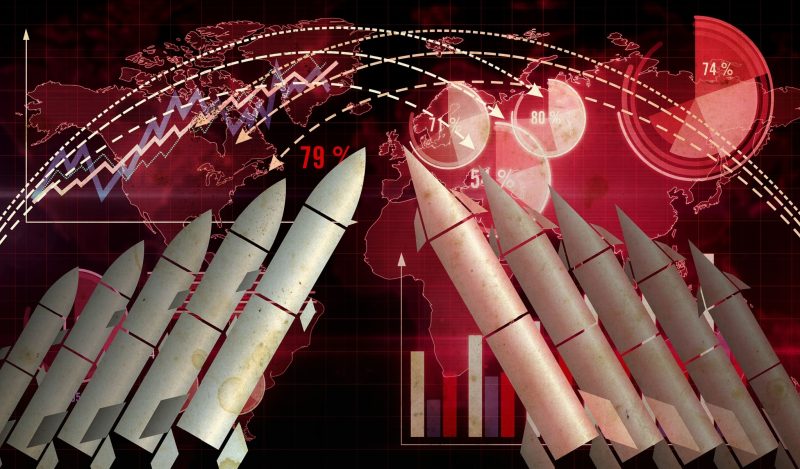One of my favorite songs from the classic movie Oliver Twist was “Who Will Buy?” which contains the following passage:
Who will buy
This wonderful morning?
Such a sky
You never did see!
Who will tie
It up with a ribbon
And put it in a box for me?
So I could see it at my leisure
Whenever things go wrong
And I would keep it as a treasure
To last my whole life long.
As a child, I immediately took to that image of being able to capture some passing element of beauty in a box and have it by my side to “see it at my leisure,” and “keep it as treasure to last my whole life long.” But, of course, I quickly learned that doing so was impossible owing to the relentless rhythm of change in life.
For me, beauty is, if not the most powerful, certainly the most accessible element of “the Good” writ large in this world. And so in time, I began to wonder whether the law of inexorable motility that applies to it also applies to its generally acknowledged antitheses, ugliness and evil. It seems logical to me that it would be so.
And yet as I read and listen to the ideas and tropes circulating in our civic spaces I get a very different message: that ugliness and evil, especially the latter, are highly stable categories, and that once an individual is assigned to that second category it is for life. And that being the case, the only thing a reasonable and “good” person can or should do is to locate that evil and fight against it with all its might.
That the contrast between good and evil might be clear-cut in a given moment of history, and that this contrast might impel us to active combat with it in that particular temporal space I do not dispute.
The problem comes when we put that particular and necessarily time-bound case of evil “in a box” so we can see it at our “leisure whenever things go wrong.”
Why?
Because in doing so, we fatally compromise our ability to examine our own proclivity to evil, be it individual or group-based, in any halfway rigorous fashion.
After all, if you’ve got evil in a box at a safe spatial and temporal remove, why knock yourself out with the difficult and often painful process of moral introspection? It’s much easier and satisfying in the short term at least to pump up the righteousness and join in the gang-fueled excitement of “going after the bad guys.”
Perhaps more importantly, having a population conditioned to see evil only in neatly wrapped boxes in places viewed as being spiritually distant from their own is immensely beneficial to our often unscrupulous elites who, through their de facto control of our cultural institutions, heavily determine how we spend our collective energies.
People who have been taught to conduct regular inventories of their own moral comportment inevitably come to recognize their own potential to do harm to others. And as a result of this, they tend to be much less inclined, as a famous teacher once said, to “cast the first stone,” and in turn, heed the calls from on high to “go after” those that the elites have portrayed as being unworthy of any compassion.
Elite culture-planning efforts designed to induce psychic splitting of this type within entire populations are nothing new. In fact, a strong case could be made that it is part and parcel of the life cycle of all empires, and that if it is left unchecked and unexamined by those within the imperial culture with the moral and intellectual capability to do so, it will lead sooner or later to that society’s collapse.
As a general rule, imperial projects arise when the elites of a particular population are impelled by vital circumstances to generate a series of cultural innovations (sometimes also referred to as options or repertoires) that lead to the development of an exceptionally strong and broad esprit de corps within that culture, and from there, a collective desire within it to exercise dominion over its potential geopolitical rivals, an exercise that is often presented on the home front as a generous act of “sharing” the goodness and bounty of their culture.
At this early juncture, the imperial project is generally quite open to external influences, as it is confident that its superior internal energy will allow it to assimilate them into its apparently upward-moving zeitgeist. This was the case in Early Imperial Spain (1492-1588), the first years of Napoleonic France (1796-1808), and the US in the four or so decades following World War II.
Eventually, power, this logic of predation, which is initially lived quite festively within the confines of the metropole, is supplanted by another centering on maintaining the monetary and territorial gains realized during the initial thrust of aggressiveness towards the supposedly inferior “others.”
Put another way, it is one thing for elites to ride the wave of energy and enthusiasm generated by innovations that recognizably improve the lives of the populace under their influence. It’s quite another to insist that that same populace remain in a state of fight-or-flight vigilance, aimed at guarding the cookie jar whose contents are increasingly digested not by them, but overwhelmingly by the small cadre of non-combatant elites above them.
This is where imperial elites inevitably turn to cartoonishly Manichaean propaganda to keep the masses in a state of proneness (p.397) regarding the need to sacrifice themselves for the maintenance of elite-controlled riches.
Any keen observer of American politics over the age of 50 will, if they have a good memory and are honest with themselves, have taken note of the dramatic transformation of rhetoric used by the US leadership class in regard to the country’s supposed international rivals over the years.
At the height of the Cold War, when the US and the Soviets had thousands of missiles pointed at each other, and the freedom-robbing communist system was still functioning, US officials and members of the press treated and wrote about their Soviet counterparts with unswerving personal courtesy.
The practice among today’s US leaders of regularly and publicly insulting and/or threatening the heads of other countries was simply unheard of a few decades back, as it was generally understood that doing so was not only to violate the most basic codes of civilized conduct, but to also unnecessarily heighten the chances of starting a catastrophic conflagration.
During this time, the role of the US in helping to win World War II was also spoken about in a similarly sober and muted fashion. Yes, we were proud of what the generation of our fathers had helped to do, but we were well aware that their contributions were only a relatively small part of the winning equation.
And while our politicians, journalists, and historians didn’t go out of their way to tout the objectively much, much greater Soviet role in securing the victory over Nazism, they certainly did not deny it either and never would have dreamed, as was done lately with the Russians, of barring Soviet representatives from ceremonies commemorating that victory.
Indeed, it is interesting to note how, as World War II has receded to an ever more remote past, references to it, that of course highlight the relatively minor role of the US and its faithful servant Great Britain in winning it to the detriment of all other contributors, are more present than ever in our public discourse.
It’d be nice to think that this is an odd historiographical accident. However, it is anything but. In providing incentives designed to create discourses that fixate the public’s gaze repeatedly on the highly sanitized version of American goodness versus a supposedly mindless and purposeless font of Nazi aggression in the relatively remote past, US elites and their well-bribed Atlanticist henchmen are training their populations to think of true evil as something contained “in a box” in that same past and that was vanquished by, you guessed it, “good people” like themselves.
By constantly directing the public gaze backward toward that supposedly simple “good fight” they effectively train the masses under their influence to not spend much or any energy contemplating their own polities’ present-day proclivities toward aggression and evil.
If there is a better way to maintain the population’s proneness toward active participation in projects designed by elites to protect their own power and prestige, I do not know one.
But unfortunately for the elites, this game of enhancing their power through the cartoonish demonization of others has its limits, limits most often imposed, paradoxically enough, by their own intemperate use of the gambit.
As the ability of imperial projects to “deliver the goods” to the rank-and-file of the home country inevitably founders, unrest grows among the population. But rather than address the anxieties generated by these diminishing returns (for which they generally have no answers), they instead direct the great “othering machine” which they long pointed at foreigners, on these disgruntled home-borne masses, confident in the belief that they that can, through these same means, cow them back into silence and submission.
We saw this throughout the pandemic with the grotesque efforts to demonize the unvaccinated, and indeed, anyone who questioned the clearly totalitarian aims of the so-called public health authorities. And we’ve seen the same dynamic – to name just a few of the many other examples that could be adduced – in the treatment of the January 6th protestors and all those who have openly questioned the aims and strategies of the “Biden” administration’s immigration policies or its approach to the conflict in Ukraine.
What these elites fail to understand in their arrogance is that suffering and hopelessness have an amazing ability to focus the human mind on the here and now. In such a context, tales of far-off bad people, and “our” need to spend lives and treasure to vanquish them lose much, if not all of their previous anesthetizing magic.
These suffering people cannot now unsee the disdain that the elites have shown for their humanity and dignity in these last four years or perhaps longer. And while we do not know what will ultimately result from their expressions of anger and disaffection, we know that most of them will never again let themselves be drawn conceptualizing evil as something that exists in a box with a bow on it in far-off places.
They have relearned a lesson that, had they been more vigilant, they never would have forgotten: that while evil perhaps manifests itself in more egregiously recognizable ways in certain places and in certain historical moments, it ultimately resides in more or less the same measure in all cultures and places. And while propaganda campaigns run during moments of imperially-fueled prosperity can often mask this fact, they cannot in the end make it go away.
Join the conversation:


Published under a Creative Commons Attribution 4.0 International License
For reprints, please set the canonical link back to the original Brownstone Institute Article and Author.









